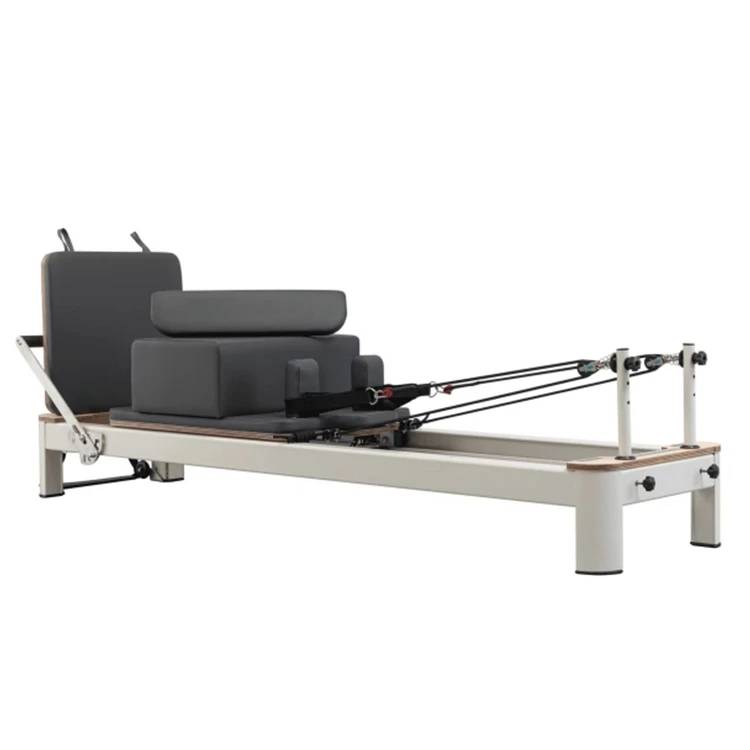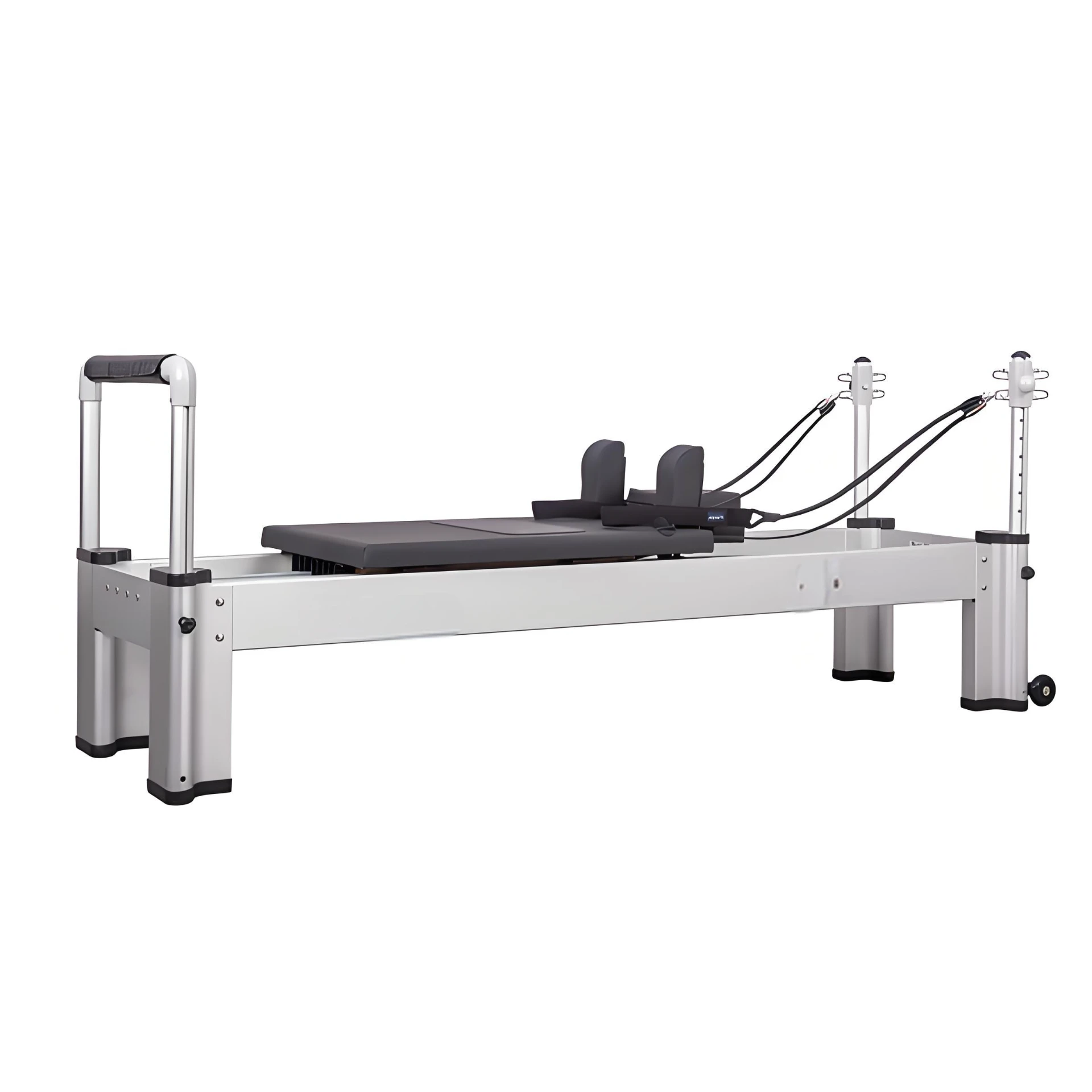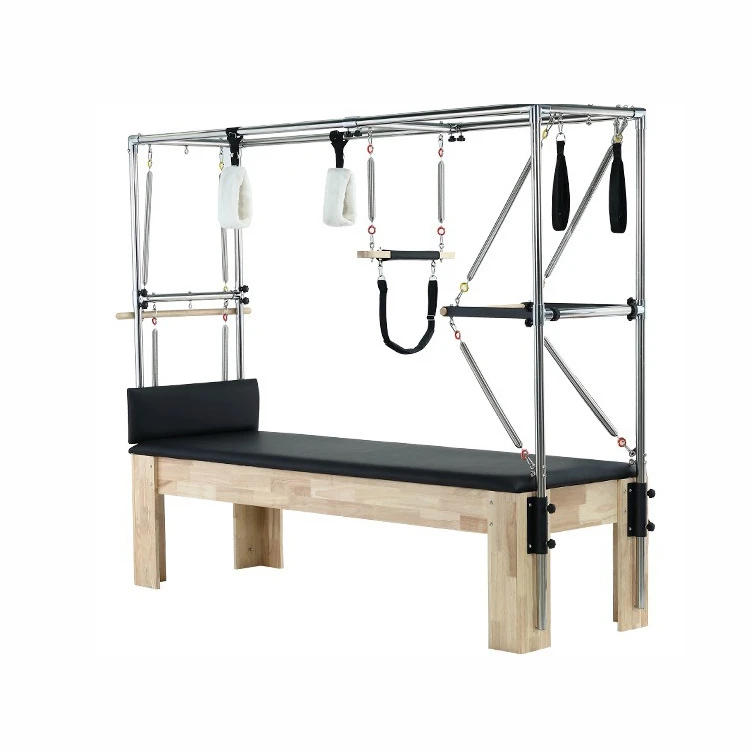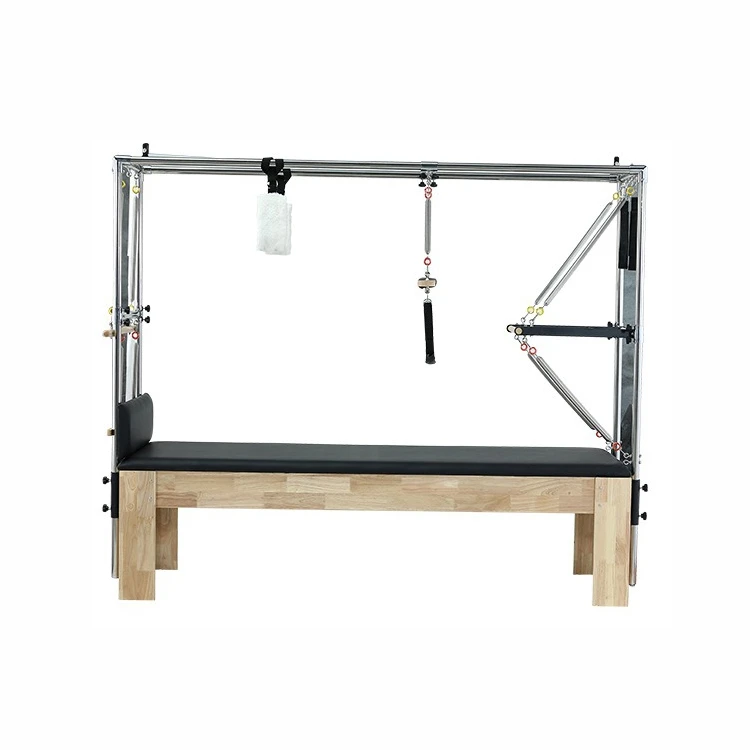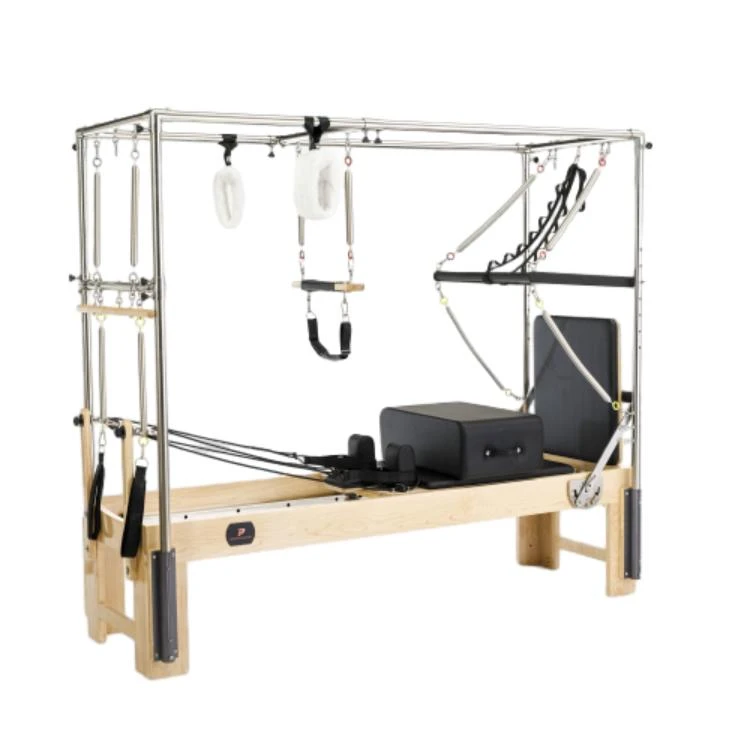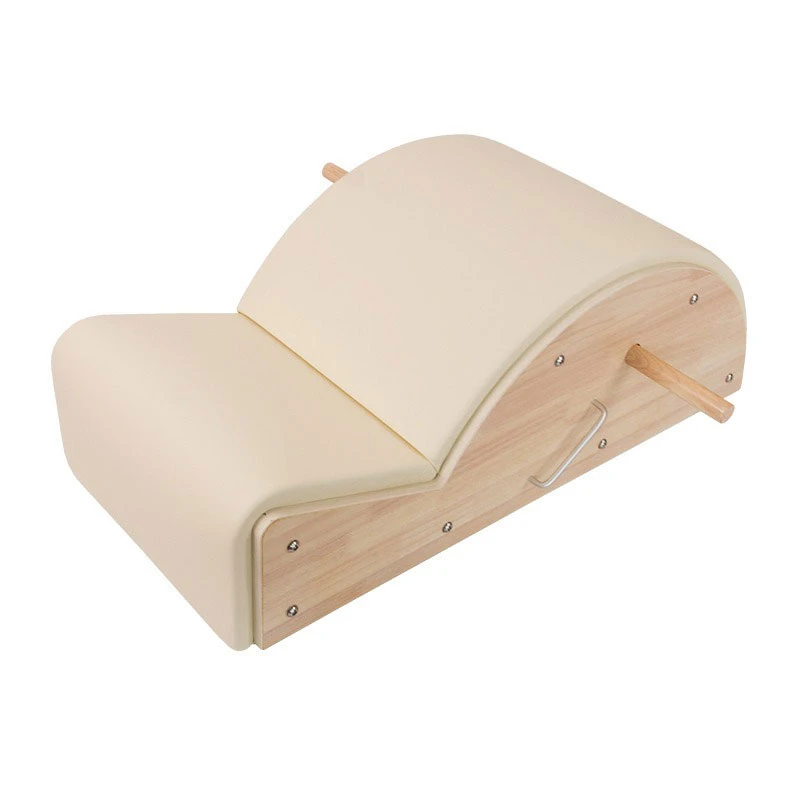Pilates Spine Corrector: Design and Function
The Pilates Spine Corrector is an important member of the Pilates equipment family, with a simple and clever design, powerful and diverse functions. Despite its seemingly simple appearance, it plays a crucial role in improving posture, enhancing core strength, and improving motion control. This article will delve into the design philosophy, functional features, and application of Pilates Spine Corrector in Pilates training.
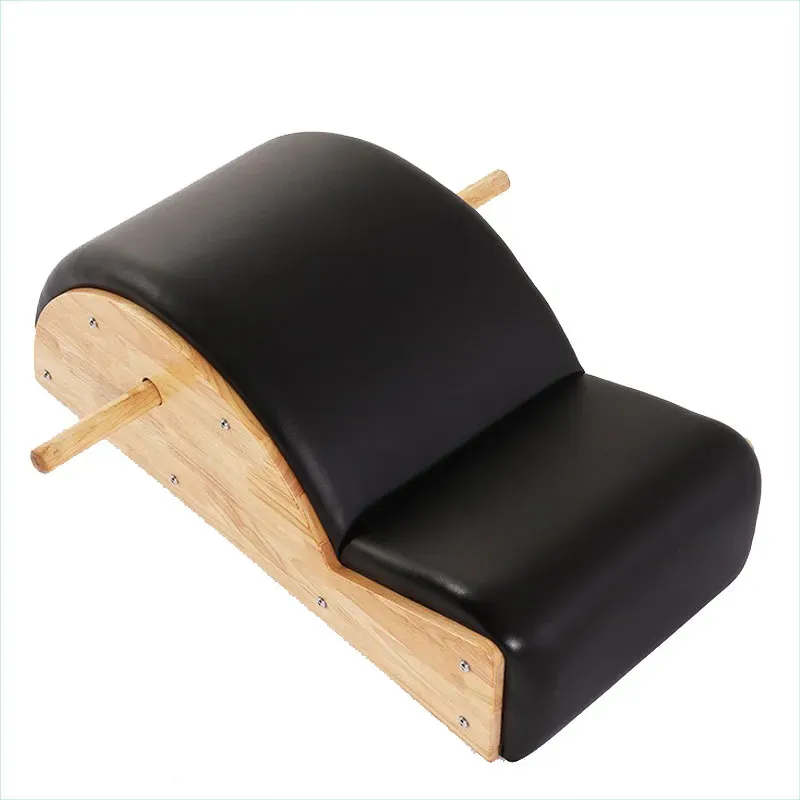
The design of Pilates Spine Corrector aims to provide an arc-shaped support to assist the body in exercises such as back extension and chest opening
Pilates spine corrector barrel typically consists of a wooden frame and padded padding, with the frame providing structural support and the padding providing comfort. This curved design cleverly mimics the natural curvature of the spine, allowing practitioners to extend and stretch the spine in a safe and controllable environment. In addition, Pilates Spine Correctors are typically equipped with handles or support points to provide additional stability and control during practice, thereby avoiding overexertion or compensation.
The functions of Pilates Spine Corrector are mainly reflected in the following aspects
Firstly, it can help improve posture. By performing back stretching exercises, pilates spine corrector foam can help open the chest cavity, correct hunchback, and alleviate spinal curvature caused by long-term desk work or poor posture. Secondly, Pilates Spine Corrector can enhance core strength. Many exercises performed on orthotics require the use of deep core muscle groups to maintain stability and control of the body, effectively enhancing core strength. Thirdly, it can enhance the ability to control movements. Practicing on unstable curved supports requires the practitioner to concentrate their attention and precisely control their body movements, thereby improving overall coordination and control of the body. Finally, Pilates Spine Corrector can serve as an auxiliary tool to help practitioners better understand and execute the principles of Pilates movements. By providing physical support and feedback, it can help practitioners better perceive their body's position and movement patterns.
In Pilates training, Pilates Spine Corrector can be used for a variety of exercises, from basic back stretching to advanced balance and control training
Common exercises include arch bridge, spinal extension, lateral bending, and rotation. These exercises can target different body parts, such as shoulders, back, hips, and legs, to achieve balanced development throughout the body. Meanwhile, the Pilates Arc Spine Corrector can also be used in conjunction with other Pilates equipment such as Pilates beds or chairs to increase the diversity and challenge of training.
In summary, the spine corrector is an effective and versatile Pilates device. It can help practitioners improve their posture, enhance their core strength, improve their ability to control movements, and ultimately achieve physical health and balance through clever design and diverse exercises. Under professional guidance, the reasonable use of Pilates Spine Corrector can bring higher benefits to Pilates training.
Pilates Spine Corrector FAQs
The Pilates Spine Corrector looks like a semi-circular arch bridge, how can it improve modern spine problems?
Its curved design is based on the principles of spinal biomechanics:
Neck and chest curvature: correcting head forward tilt (suitable for mobile phone users)
Lumbar support: Relieve lumbar spine straightening caused by prolonged sitting
Dynamic extension: When completing actions such as "Roll Over", the spine's range of motion increases by 50% segment by segment
(Clinical studies have shown that after 15 minutes of training per day, the improvement rate of cervical curvature can reach 68% after 6 weeks.)
How can office workers use Pilates Spine Corrector for fragmented training?
Recommend 3 'Office Chair Replacement Solutions':
① Sitting posture pelvic clock (correcting pelvic tilt):
Sitting at the highest point of the curved surface
Imagine the pelvis as a pendulum, moving forward, backward, left, and right for 2 minutes each
② Supine breathing training (relieving thoracic stiffness):
Place the corrector against the lower edge of the scapula
Hold your head with both hands and take deep breaths, expanding the back of your ribs with each inhalation
③ Bridge variant (activating gluteal muscles):
Step on the ground and place the sacrum on the curved surface
Keep the curved surface stable when lifting the buttocks
What are the unique advantages of Pilates Spine Corrector compared to other Pilates equipment?
Three irreplaceability factors:
- Precise support: The curvature radius of the curved surface (usually 3540cm) perfectly matches the physiological curve of the spine
- Portability: Weight<5kg, can be placed under the desk/next to the sofa
- Training conversion rate: 1-minute corrector training ≈ 3-minute pad training effect (for deep muscle groups)
How to determine professional quality when choosing Pilates Spine Corrector?
Identify four core parameters:
Material: Medical grade PE material (thickness ≥ 8mm)
Size: Length 8090cm (suitable for Asian height)
Anti slip design: Bottom silicone particle diameter>3mm
Load bearing: Static load ≥ 200kg
(Recommended brand: Classic version of Balanced Body/Gratz)
Why is Pilates Spine Corrector highly recommended for maternity rehabilitation?
Application during pregnancy and postpartum stages:
Mid pregnancy (1428 weeks):
Lying sideways on the curved surface and doing "seahorse breathing" to relieve rib inversion
42 days and 3 months postpartum:
Perform pelvic rolling on a supine curved surface to gently repair the rectus abdominis muscle
36 months postpartum:
Kneeling posture "cat style+curved sliding" to rebuild core stability
(Research shows that with respiratory training, the recurrence rate of postpartum back pain is reduced by 42%)
Latest news
-
Types of Pilates Machines Used in Group Classes Versatility GuideNewsJul.07,2025
-
Pilates Spine Corrector Benefits for Posture and Core StrengthNewsJul.07,2025
-
Pilates Chair for Sale Adjustable Spring Systems for All Fitness LevelsNewsJul.07,2025
-
Ladder Barrel for Sale Commercial-Grade Wooden ConstructionNewsJul.07,2025
-
Eco-Friendly Pilates Studio Equipment Sustainable Materials GuideNewsJul.07,2025
-
Adjustable Pilates Chair Settings for All Fitness LevelsNewsJul.07,2025
- Address
- Room 1601, 1302, Building A, Zijingguandi, Qiaodong District, Xingtai City, Hebei Province, China
- Sandra@raetin.com
- Phone
- +86 18231139331

